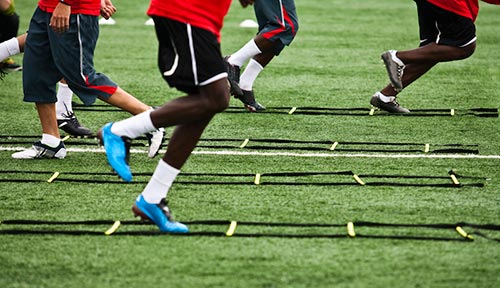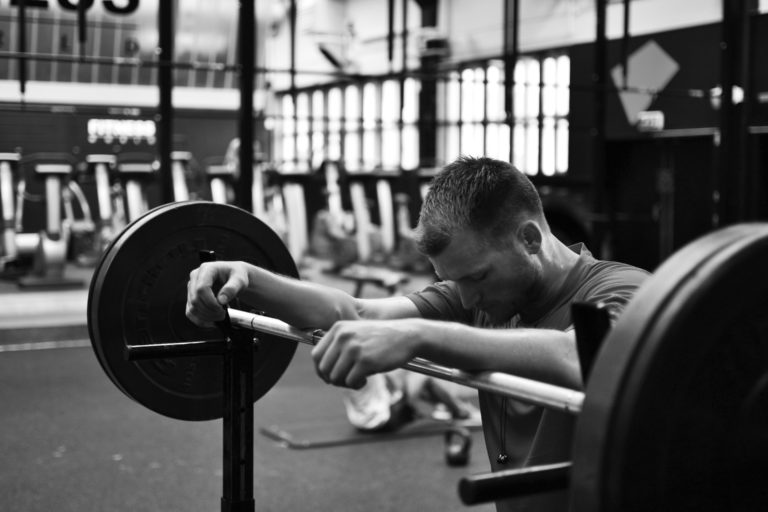Programming: Over the years there has been much debate over the effectiveness of sports-specific resistance training, likewise, the effectiveness of not engaging in it. This article aims to give a logical view on the reason as to why it is beneficial for an athlete NOT to do it, and to explain the reasoning behind a sample program selected for optimal sports performance.
Firstly, sports would not be sports if they did not require a substantial amount of skill conditioning. This skill conditioning component is what separates two athletes, of the same physical conditioning, on the sports field.

The rule of specificity states that:
The Rule of Specificity
“A specific training program will produce an adaptation that is specific to the training stimulus the client has been exposed to. This is called the specific adaptation to imposed demands.”
Exercise is either aerobic or anaerobic. Sports performance involves skill conditioning and physical conditioning. The view that many trainers take in regards to sports specific resistance training is the following logical equation:
Sports movement + Resistance = Stronger at that particular movement
= Better sports performance
The Drawbacks of Specificity in Sports Training
Perfectly logical isn’t it? However, for an athlete wanting to improve his rugby pass, he might be told to engage in the following exercise at the gym:
Stand side on, 5m away from a brick wall. Throw a 5kg medicine ball hard to mimic a rugby pass. Focus on oblique rotation as you turn to the wall, and then engage in maximal elbow extension as you start to throw the pass. Do this for 6 weeks and you will develop a much more effective pass.
One might think the equation suggests the best way to improve a rugby pass. It’s certainly one method. Let’s consider specificity’s definition for another equation:
Rugby pass movement + 5 kg medicine ball = Better at passing a 5kg medicine ball
The Potential Negative Effects of Resistance Training on Specific Skills in Sports
In search for a stronger rugby pass, the athlete has done what motor control expects would consider as an exercise that potentially damages his specific skill to pass a rugby ball with his right side. What he has done by engaging in this particular movement with applied resistance is that he has:
- Learnt to drop his left shoulder more in order to shift his body weight to help move the increased resistance.
- Has changed the angle of release in order to get the heavier weight the same distance.
- Interfered with the specific order and level of activation of the abdominal and oblique muscles allowing for efficient torso rotation to carry out the movement.
- Learnt to switch-on a different amount of motor neurons in the increased muscular effort of the triceps, shoulder and pectoral muscle groups.

With this application of a new skill development (the skill to throw a 5kg medicine ball), he could potential damage his skill to throw a rugby ball, resulting in a pass that is either: too high, too low, or even off-target.
The Impact of Gym Sessions on Athlete Recovery and Physical Preparation
Professional athletes have spent thousands of hours in search for a certain level of skill conditioning for their respected sports, and continue to do so in pre-season and competition season training. However the biggest killer in terms of ideal physical preparation for a game is the 3 x week gym sessions that last 30 mins to 90 mins each, thereby combining of 90 mins – 270 mins of high levels of exertion per week, which result in a dramatic hole in an athlete’s recovery ability.
The proposed program will:
- Dramatically decrease the time athletes spend in a gym.
- Continue to enhance their level of physical ability.
- Allow for more time spent on their skill conditioning.
- Allow for greater recovery during the week so to physically prepare them as effectively as possible.
- Not involve any exercises that will damage their specific skills.
| Exercise | Target Reps | Speed | Weight | Reps Completed |
| Squat | 10 | 404 | ||
| Deadlift | 10 | 404 | ||
| Bench Press | 10 | 404 | ||
| Seated Row | 10 | 404 | ||
| Barbell Shoulder Press | 10 | 404 | ||
| Chin-Up | 10 | 404 | ||
| Ab Crunch | 10 | 404 |
A Single-Set Program for Optimal Physical Conditioning in Minimal Time
In the following single-set program, which aims to target the major muscle groups in a natural and functional range of movement, the main aim is to help the athletes intelligently build upon an already strong connective structure (the body), so that they can produce maximal benefits from minimal time spent exercising. If the above program is performed, for maximum two sessions per week, the athlete would spend approximately 20 mins in the gym to achieve desired physical conditioning status (compared to the 90 – 270 mins previously stated).
[Working out: (Workout = 2 sessions x 7 exercises x 8 secs/rep x 10 reps = 18 mins 40 secs) ]
There are many levels and varieties of sports specific strength training in the fitness industry. However beneficial they may seem to be, there is absolutely no way an athlete should apply any resistance and purposely mimic such a specific sporting movement like a rugby pass, basketball shot, golf swing or tennis serve, in any attempt to make that movement patter ‘stronger’.
If you found this article useful you may also enjoy reading 12 Tips For Successful Coaching or Bulking Up and Gaining Strength. Strength and Conditioning is covered in the Certificate IV in Fitness, and Diploma of Sport .
